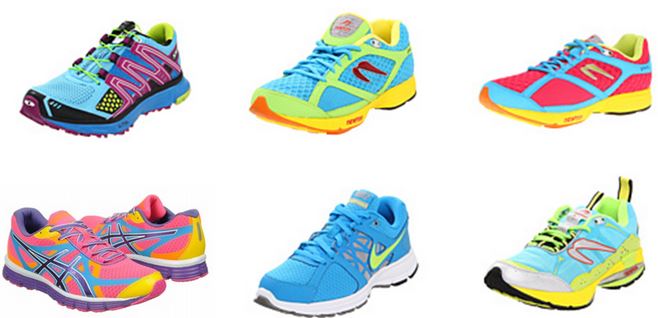Running Shoe FAQ – When am I to stop using my running shoes?
When am I to stop using my running shoes?
Generally, your running shoes should be laid aside from use after about 300 to 500 miles. You actually determine how easily and rapidly your shoe wears. A more efficient runner will not wear out his shoes as rapidly as one who land shard with every stride. If the sole under your shoe’s heel appears crushed or you are beginning to see the white midsole of your shoe through the outsole, your shoes are more than due for replacement. When your legs start feeling as though they aren’t being protected enough after a normal run, they most likely aren’t, so go by feel.
I was told by the local running store owner that it’s better for my feet if I train in two or more different shoe models. Was she trying to exploit me since I am new to the sports?
She wasn’t trying to exploit you, though the cost may be quite high. It’s a great suggestion. Your biomechanics will acclimatize easily to each shoe when you run in more than a pair and as a result prevent injuries that come from overuse. If you run at regular intervals, say at night and in the mornings, your feet will get better protection from using different pairs because it takes the midsole foam about 24hours to recover fully from a run.
I am an army fitness trainer stationed in Iraq. I am also a high arched runner. I developed plantar fasciitis after a few tours so what shoe will help ease the pain?
Neutral-cushioned shoes would be great for you because your feet, most likely, don’t roll inward enough when your foot strikes the ground. You could try a heel lift e.g. the Spenco Gel heel cups. These shorten the length your calf has to stretch thereby removing some of the pressure from your plantar fascia. You could also add an aftermarket insole to your shoes to aide in circulating the pressure and control your plantar pain. Ice and rest aide in overcoming plantar fasciitis but are sadly in short supply in Iraq.
Is shoe breakdown affected by the kind of surface you run on?
Sure it does. Running on the road will make your shoes wear faster than running on a trail. But a more significant factor is the way you run. A 120-pound biochemically efficient runner running on the road will not wear out his shoes as fast as a 250-pound heavy heel striker running only on trails will.
If you’re worried that your shoes are ready for retirement, take a close look at them. If the upper appears pulled or stretched so that the foot is sliding off the midsole, or the grooves on the outsole are worn smooth, it’s time for new running shoes.
The balls of my feet hurt during long runs in my motion control shoes. Does this have to do with my aging, my shoes, the way I run or all of the above?
Shoes with great cushioning are very essential for aging runners. The normal cushioning of the foot starts to lode its bounciness as age sets in. Contemplate getting a stability model instead of a motion-control model if you’re under 160-pounds. Get a shoe that’s got great support and a great RW Shoe Lab cushioning score.
My shoes wear along the outside edges yet the wet test confirms I’m flat footed. What type of shoe should I use considering I also experience pain about nine miles into my runs?
You may be supinating, i.e. your foot doesn’t roll inwards enough when your foot strikes the ground. This could be because your shoe’s providing you too much support or your ITB (iliotibial band) is been stressed because you are running in trainers that are worn out. You may be among the few flat footed runners who don’t overpronate and so need less supportive shoes. Go to a specialty running store to learn about your gait and determine the type of shoes you should be running in.
I have normal arches. Could it be harmful wearing motion-control shoes?
Your weight and whether you overpronate or not are what will determine what kind of shoes to use. Bigger runners using stability shoes will not get the needed support and can actually bottom out the cushioning, canceling out the shoe’s ability to protect the foot from impact. For runners who weigh 160-180 pounds (for men) or 140-160 pounds (for women) and overpronate, motion control shoes would be good. For runners weighing less than 140 pounds (for men) and 120 pounds (for women) and overpronate, moderate stability shoes would provide the needed support.
What type of shoe should someone like me who has low arches wear? My shoes always wear along the outside.
Since you have low arches, you should go with more supportive shoes that provide enough heel support upon landing. 80 percent of runners are heel-strikers and you may be one of them if your wears are only in the heels. Shoes having durable materials like carbon rubber in their outsole could aid in reducing the wear. Anyways, note that because women have greater quadriceps angle (Q-angle) from hip to knee, they readily see wears by the outer edges.


